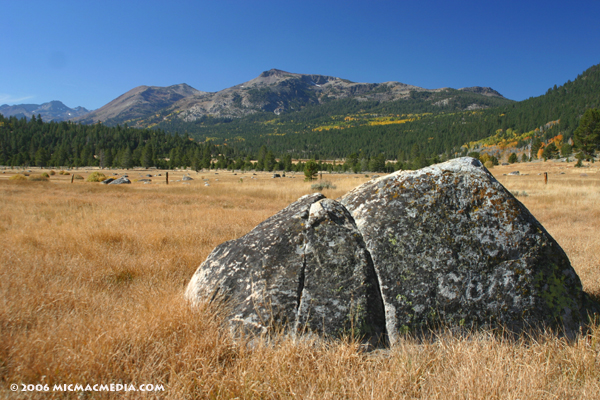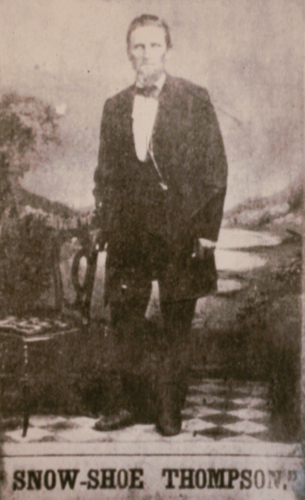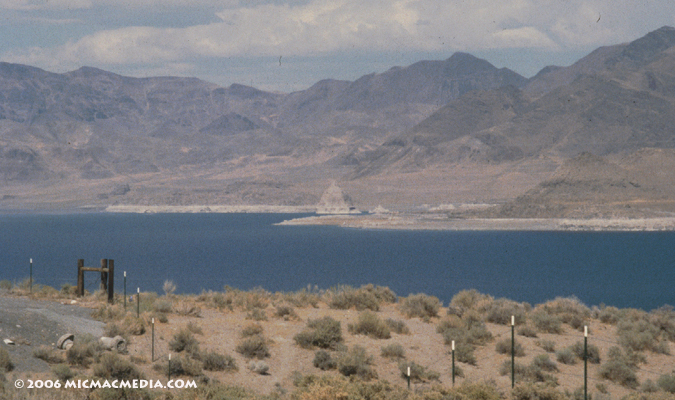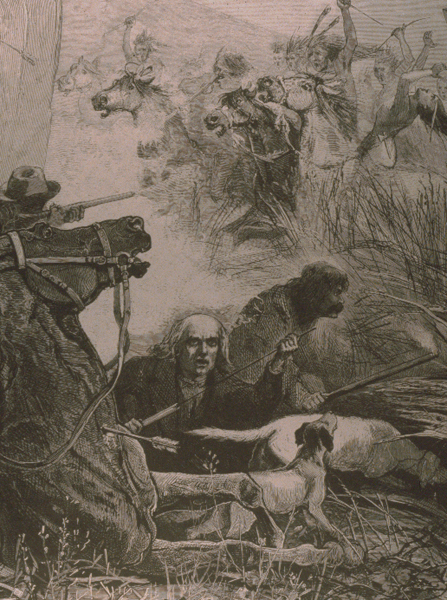|
Tahoe Nugget #62:
Snow-Shoe Thompson's Scariest Moments (4 Photos)
April 10, 2006
There's no doubt that John "Snow-Shoe" Thompson was brave and fearless. During his 20 years carrying the U.S. Mail back and forth across the storm-wracked Sierra Range during the winter months,
Snow-Shoe earned a well-deserved reputation for extraordinary endurance and heroic bravery that has withstood the test of time. He skied over the mountains throughout the winter, with no gun for protection and only
bits of beef jerky to sustain him. A short version of Thompson's incredible story is posted here.
Snow-Shoe Thompson was once described as the "hardiest and mightiest man that ever shook a leg over the California
uplands," but there were two events that scared the daylights out of the only person known to ski with confidence, time after time, into the worst blizzards that the Storm King could conjure. Ironically,
neither of Thompson's most frightful experiences were related to weather or snow.
Although Snow-Shoe traveled the Sierra backcountry for more than two decades, he never once encountered a grizzly bear,
but he always reasoned that he could easily ski away if he had to. It was a close call with wolves that he always mentioned when asked about dangerous animals: "I was never frightened but once during all my
travels in the mountains. That was in the winter of 1857. I was crossing Hope Valley (south of Lake Tahoe), when I came to a place where six great wolves—big timber wolves—were at work in the snow,
digging out the carcass of some animal. They were great, gaunt, shaggy fellows." As a young boy growing up in Norway, Thompson had heard many stories about the ferocity of wolves, and he feared them more than
any other wild animal. Snow-Shoe was confident he could safely ski away from a grizzly, but he knew that the lightly built wolves could "skim over the snow like birds."
As Thompson slowly approached
the wolves, they left the carcass, and in single file came out a distance of about 25 yards from him. The wolves all crouched down with "every eye and every sharp nose" turned towards him. Thompson later
said that we he looked at the wolves lined up in front of him, he got cold chills and had a queer feeling about the roots of his hair. But what frightened him most was the confidence they displayed. Snow-Shoe dared
not show his fear so he held his breath and kept skiing past them. The dominant wolf suddenly let forth a loud, eerie howl and the others joined in, but Thompson did not panic and the wolves did not pursue him.
Thompson's other near-death experience occurred near Pyramid Lake (terminus of the Truckee River). In May 1860, tensions between the white settlers and the local Paiute Indian Tribe led to the
little-known Pyramid Lake Indian War, when 105 poorly organized pioneers rashly invaded the ancestral Paiute homeland and were routed by the natives. Seventy-five setters were killed in the massacre and several
wounded. By contrast the Indians suffered only light casualties. Snow-Shoe Thompson was in the thick of the battle when his horse was shot out from beneath him. Snow-Shoe was one of the fastest men alive on skis,
but now his life depended on the outcome of a foot-race with Indian warriors. Thompson later said, "I pledge you my word that more than once I wished that all the valley was buried in snow, and I was mounted on
my snowshoes."
As Thompson ran for the safety of the foliage along the Truckee River, he felt hot breath over his shoulder. Expecting hand-to-hand combat with a Paiute brave, he wheeled about quickly.
His elbow struck the nose of a riderless horse, saddled and bridled. He leaped onto the animal and escaped with his life. For the rest of his days, Snow-Show Thompson believed that the horse had been heaven-sent.
Photo #1: Hope Valley, California, where Snow-Shoe encountered the pack of wolves
Photo #2: Snow-Shoe Thompson was called "The Man from Silver Mountain."
Photo #3: Pyramid Lake, site of the
tragic battle between settlers and Paiute Indians
Photo #4: Out-numbered and out-gunned, the rag-tag pioneer forces were routed with great loss of life




|






